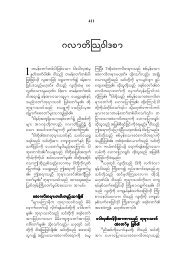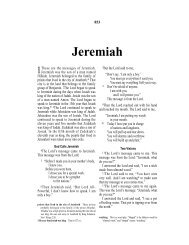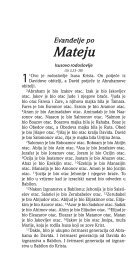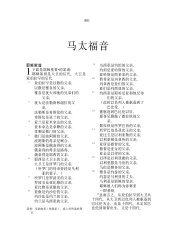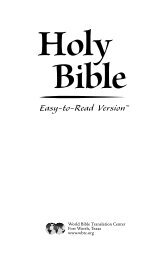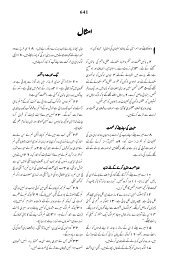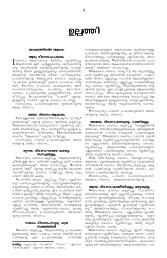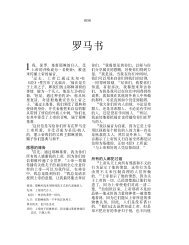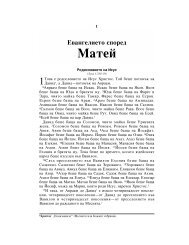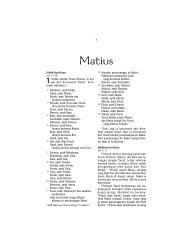English Version for the Deaf
English Version for the Deaf
English Version for the Deaf
Create successful ePaper yourself
Turn your PDF publications into a flip-book with our unique Google optimized e-Paper software.
v<br />
Preface<br />
This version of <strong>the</strong> Bible has been prepared especially <strong>for</strong> people who are<br />
deaf. It is important that everyone have <strong>the</strong> Bible in a language <strong>the</strong>y understand.<br />
But existing <strong>English</strong> versions do not meet <strong>the</strong> special needs of most<br />
deaf people, because <strong>the</strong> deaf have not had <strong>the</strong> advantage of constant exposure<br />
to <strong>the</strong> spoken language in developing <strong>the</strong>ir knowledge and usage of<br />
<strong>English</strong>.<br />
The <strong>English</strong> <strong>Version</strong> <strong>for</strong> <strong>the</strong> <strong>Deaf</strong> is not a revision of any <strong>English</strong> version<br />
designed <strong>for</strong> <strong>the</strong> hearing. It is an original translation based on <strong>the</strong> Hebrew<br />
and Greek Biblical texts. The wording will often strike <strong>the</strong> reader as different<br />
from o<strong>the</strong>r <strong>English</strong> translations, but it accurately expresses <strong>the</strong> full<br />
meaning of <strong>the</strong> original text in a style that is clear and easy to understand.<br />
The writers of Scripture, especially those who produced <strong>the</strong> New Testament<br />
writings, showed by <strong>the</strong> common language style <strong>the</strong>y used that <strong>the</strong>y were<br />
interested in good communication. The translators of this <strong>English</strong> version<br />
considered <strong>the</strong>ir example to be an important one to follow. So <strong>the</strong>y worked<br />
to express <strong>the</strong> meaning of <strong>the</strong> Biblical text in a <strong>for</strong>m that would be simple<br />
and natural. They used language that would not be a hindrance to understanding,<br />
but would provide a key to unlock <strong>the</strong> truths of Scripture <strong>for</strong><br />
people whose experience with <strong>English</strong> has been limited.<br />
Although <strong>the</strong> full meaning of <strong>the</strong> original text is expressed in <strong>the</strong> translation,<br />
<strong>the</strong> sense of <strong>the</strong> original has been restructured into <strong>the</strong> closest natural<br />
equivalents in <strong>English</strong> <strong>for</strong> <strong>the</strong> deaf community. For example, pronouns such<br />
as "he," "she," and "<strong>the</strong>y" are usually replaced with proper names, as is <strong>the</strong><br />
practice in sign language. Many common idioms used in spoken <strong>English</strong> are<br />
avoided, such as, "They got mad," which might be expressed instead as<br />
"They became angry." The result is an <strong>English</strong> translation that communicates<br />
more effectively to <strong>the</strong> deaf.<br />
The use of <strong>English</strong> was, of course, a practical necessity. But great care was<br />
taken to speak primarily to <strong>the</strong> deaf and not to <strong>the</strong> hearing. With <strong>the</strong> help of<br />
consultants familiar with deaf communication patterns, <strong>the</strong> translators<br />
attempted to match those patterns in <strong>English</strong> as closely as possible. They<br />
also benefited from testing done in different regions of <strong>the</strong> United States to<br />
determine a vocabulary familiar to most deaf readers.<br />
The result might appear to be just a simple <strong>English</strong> version of <strong>the</strong> Bible, but



